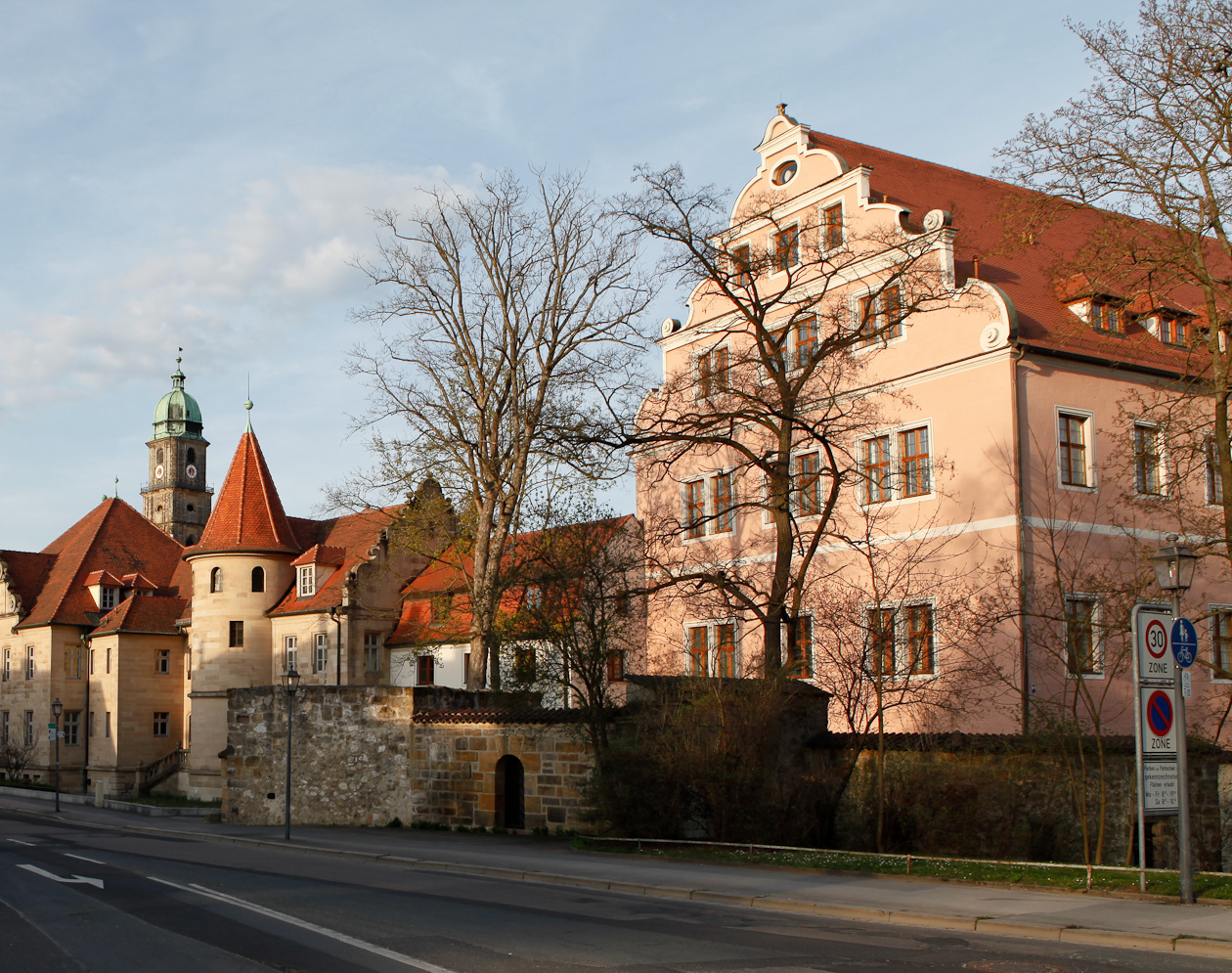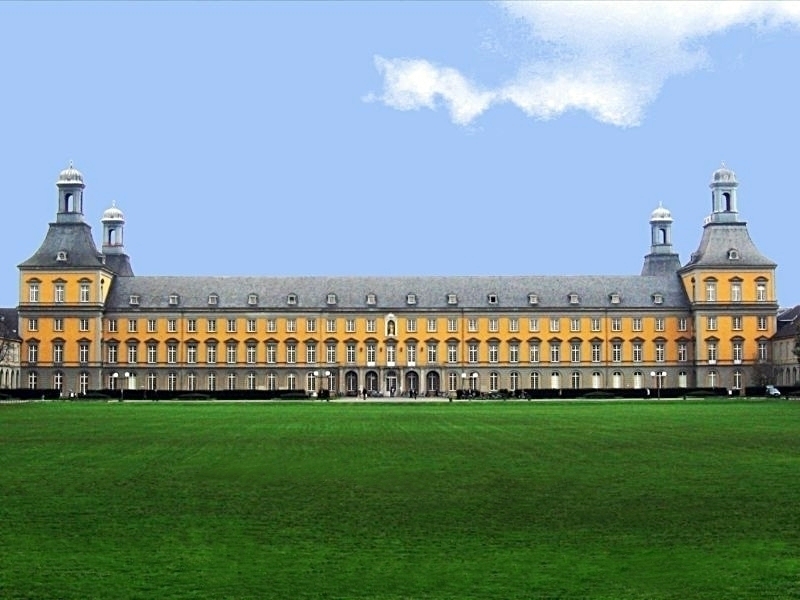|
Electoral Palace (other)
Electoral Palace or Elector's Palace may refer to any of the palaces of one of the German Holy Roman Empire's Prince-electors: * Electoral Palace, Amberg, of the Elector of the Palatinate at Amberg * Electoral Palace, Bonn, of the Archbishops and Electors of Cologne at Bonn * Electoral Palace, Koblenz, of the last Archbishop and Elector of Trier at Koblenz * Electoral Palace, Mainz, of the Archbishops and Electors of Mainz * Heidelberg Castle, the ruined Electoral Palace of the Electors Palatine of the Rhine at Heidelberg * Mannheim Palace, the main residence of the Electors Palatine of the Rhine at Mannheim * Schloss Johannisburg, an Electoral Palace of the Archbishops and Electors of Mainz at Aschaffenburg See also * Bishop's Palace (other) * List of castles in Germany This is a list of Castles and other such fortifications and palaces or country homes in Germany. Included are castles (german: Burg, Schloss), forts (german: Festung), palaces (german: Schloss, Pal ... [...More Info...] [...Related Items...] OR: [Wikipedia] [Google] [Baidu] |
Holy Roman Empire
The Holy Roman Empire was a Polity, political entity in Western Europe, Western, Central Europe, Central, and Southern Europe that developed during the Early Middle Ages and continued until its Dissolution of the Holy Roman Empire, dissolution in 1806 during the Napoleonic Wars. From the accession of Otto I in 962 until the twelfth century, the Empire was the most powerful monarchy in Europe. Andrew Holt characterizes it as "perhaps the most powerful European state of the Middle Ages". The functioning of government depended on the harmonic cooperation (dubbed ''consensual rulership'' by Bernd Schneidmüller) between monarch and vassals but this harmony was disturbed during the Salian Dynasty, Salian period. The empire reached the apex of territorial expansion and power under the House of Hohenstaufen in the mid-thirteenth century, but overextending led to partial collapse. On 25 December 800, Pope Leo III crowned the List of Frankish kings, Frankish king Charlemagne as Carolingi ... [...More Info...] [...Related Items...] OR: [Wikipedia] [Google] [Baidu] |
Prince-elector
The prince-electors (german: Kurfürst pl. , cz, Kurfiřt, la, Princeps Elector), or electors for short, were the members of the electoral college that elected the emperor of the Holy Roman Empire. From the 13th century onwards, the prince-electors had the privilege of electing the monarch who would be crowned by the pope. After 1508, there were no imperial coronations and the election was sufficient. Charles V (elected in 1519) was the last emperor to be crowned (1530); his successors were elected emperors by the electoral college, each being titled "Elected Emperor of the Romans" (german: erwählter Römischer Kaiser; la, electus Romanorum imperator). The dignity of elector carried great prestige and was considered to be second only to that of king or emperor. The electors held exclusive privileges that were not shared with other princes of the Empire, and they continued to hold their original titles alongside that of elector. The heir apparent to a secular prince-ele ... [...More Info...] [...Related Items...] OR: [Wikipedia] [Google] [Baidu] |
Electoral Palace, Amberg
The Electoral Palace (german: Kurfürstliches Schloss) is a Schloss in Amberg. After several large fires in the 17th century, only the south wing (''Neues Schloss'') remains from the once three-winged palace. It is connected through the fortified bridge ''Stadtbrille'', to the ''Zeughaus'' (armory) across the Vils river. It was built from 1417 by Louis III, Elector Palatine, and replaced the Alte Veste, a Gothic building in the town center, as the electoral court. The original building on the north was added with a south wing, a moat and a gatehouse, by Elector Frederick I turning it into a fortress. Its present appearance with a high voluted gable was set in 1603 by Johannes Schoch, who redesigned the Zeughaus with an added tower on the south. On 1738 horse stables were built as a western wing. Having served the Electors of the Palatinate from its construction to the abolition of the Electorate, the castle was home, since the 19th century, first to the Royal Bavarian Distric ... [...More Info...] [...Related Items...] OR: [Wikipedia] [Google] [Baidu] |
Electoral Palace, Bonn
The Electoral Palace (german: Kurfürstliches Schloss) in Bonn is the former residential palace of the Prince-Electors of Cologne. Since 1818, it has been the University of Bonn's main building in the city center, home to the University administration and the faculty of humanities and theology. It was built by Enrico Zuccalli for the prince-elector Joseph Clemens of Bavaria from 1697 to 1705. The ''Hofgarten'', a large park in front of the main building, is a popular place for students to meet, study and relax. The Hofgarten was repeatedly a place for political demonstrations, as for example the demonstration against the NATO Double-Track Decision The NATO Double-Track Decision was the decision by NATO from December 12, 1979 to offer the Warsaw Pact a mutual limitation of medium-range ballistic missiles and intermediate-range ballistic missiles. It was combined with a threat by NATO to d ... on 22 October 1981, with about 250,000 participants. References External links ... [...More Info...] [...Related Items...] OR: [Wikipedia] [Google] [Baidu] |
Electoral Palace, Koblenz
The Electoral Palace (German: Kurfürstliches Schloss) in Koblenz, was the residence of the last Archbishop and Elector of Trier, Clemens Wenceslaus of Saxony, who commissioned the building in the late 18th century. In the mid-19th century, the Prussian Crown Prince (later Emperor Wilhelm I) had his official residence there during his years as military governor of the Rhine Province and the Province of Westphalia. It now houses various offices of the federal government. The Electoral Palace is one of the most important examples of the early French neoclassical great house in Southwestern Germany, and with Schloss Wilhelmshöhe in Kassel, the Prince Bishop's Palace in Münster and Ludwigsburg Palace, one of the last palaces built in Germany before the French Revolution.Ralf A. FlemmingKurfürstliches Schloss Structurae, retrieved 21 May 2013 Since 2002, it has been part of the Rhine Gorge UNESCO World Heritage Site, and it is also a protected cultural property under the Hague ... [...More Info...] [...Related Items...] OR: [Wikipedia] [Google] [Baidu] |
Electoral Palace, Mainz
The Electoral Palace in Mainz (german: Kurfürstliches Schloss zu Mainz) is the former city ''Residenz'' of the Prince-elector and Archbishop of Mainz. It is one of the important Renaissance buildings in Germany. Background Originally, the Archbishop of Mainz resided at the cathedral, where there is an old private chapel dating from 1137, but in 1475, when the Chapter re-elected Diether von Isenburg, conditions were imposed: he had to surrender the town of Mainz to the Chapter, and erect a castle in the city. The construction of Martinsburg began in 1478 and was completed two years later. For several decades, the archbishops lived either there or in the electoral palace at Aschaffenburg, Schloss Johannisburg. After receiving damage during the second war with the margraves in 1552 the castle was restored in a Renaissance style. Archbishop Daniel Brendel von Homburg built office buildings and St Gangolph's Church around the year 1580. (In order to make way for new avenues, thes ... [...More Info...] [...Related Items...] OR: [Wikipedia] [Google] [Baidu] |
Heidelberg Castle
Heidelberg Castle (german: Heidelberger Schloss) is a ruin in Germany and landmark of Heidelberg. The castle ruins are among the most important Renaissance structures north of the Alps. The castle has only been partially rebuilt since its demolition in the 17th and 18th centuries. It is located up the northern part of the Königstuhl (Odenwald), Königstuhl hillside, and thereby dominates the view of the old downtown. It is served by an intermediate station on the Heidelberger Bergbahn funicular, funicular railway that runs from Heidelberg's Kornmarkt to the summit of the Königstuhl. The earliest castle structure was built before 1214 and later expanded into two castles circa 1294; however, in 1537, a lightning bolt destroyed the upper castle. The present structures had been expanded by 1650, before damage by later wars and fires. In 1764, another lightning bolt caused a fire which destroyed some rebuilt sections. File:Schlossbeleuchtung 10.jpg, alt=, Heidelberg Castle and Ol ... [...More Info...] [...Related Items...] OR: [Wikipedia] [Google] [Baidu] |
Mannheim Palace
Mannheim Palace (german: Mannheimer Schloss) is a large Baroque palace in Mannheim, Baden-Württemberg, Germany. It was originally the main residence of the Prince-electors of the Electorate of the Palatinate of the House of Wittelsbach until 1777. Part of the palace is used today by the University of Mannheim. The castle, which features tapestries, furniture, paintings, porcelain and silverware can be visited on a free-flow basis with audioguides. Origins The city of Mannheim, founded in 1606, was fortified and at the present site of the castle there was a fortress called ''Friedrichsburg'', sometimes serving as alternative residence for the Elector, one of the most important territorial princes of the Holy Roman Empire. The actual palace dates from the 18th century. When Elector Karl III Philip had confessional controversies with the inhabitants of his capital Heidelberg, he decided to make Mannheim the Palatinate's new capital in 1720. Karl Philip decided to construct a ... [...More Info...] [...Related Items...] OR: [Wikipedia] [Google] [Baidu] |
Schloss Johannisburg
Schloss Johannisburg is a schloss in the town of Aschaffenburg, in Franconia in the state of Bavaria, Germany. It was erected between 1605 and 1614 by the architect for Johann Schweikhard von Kronberg, Prince Bishop of Mainz. Until German mediatization, 1803, it was the second residence of the Electorate of Mainz, Prince Bishop of Mainz. It is constructed of red sandstone, the typical building material of the Spessart, the hills near Aschaffenburg. Location ''Schloss Johannisburg'' is located in the city of Aschaffenburg, in the district of Lower Franconia of the state of Bavaria, Germany. It is situated in the center of the city, overlooking the river Main (river), Main. History The palace was erected between 1605 and 1614 by the architect for Johann Schweikhard von Kronberg, Archbishop of Mainz. The considerable expense came from the taxes of his fief: Eichsfeld, Erfurt and the ''Mainzer Oberstift'' (the part of the Electorate administered from Aschaffenburg) made the larg ... [...More Info...] [...Related Items...] OR: [Wikipedia] [Google] [Baidu] |
Bishop's Palace (other)
Bishop's Palace may refer to the official residence of any bishop, such as those listed in the :Episcopal palaces. Specific residences called Bishop's Palace include: Poland * Palace of the Kraków Bishops in Kielce, Poland * Bishop's Palace, Kraków, Poland United Kingdom England * Bishop's Palace, Auckland, County Durham * Bishop's Waltham Palace, Hampshire * Bishop's Palace, Bromley, Kent * Old Bishop's Palace, Chester, Cheshire * Lambeth Palace, London * Bishop's Palace, Lichfield, Staffordshire * Lincoln Medieval Bishop's Palace, Lincolnshire * Sonning Bishop's Palace, Berkshire * Bishop's Palace, Wells, Somerset * Bishopthorpe Palace, North Yorkshire * The Old Palace, Worcester, Worcestershire Scotland * Bishop's Palace, Kirkwall, Orkney Wales * Lamphey Bishop's Palace, Pembrokeshire * Bishop's Palace, Llandaff, Cardiff * Mathern Palace, Monmouthshire * St Davids Bishops Palace, Pembrokeshire Other places * Prince-Bishops' Palace (Liège), Belgium * Kroměříž Bish ... [...More Info...] [...Related Items...] OR: [Wikipedia] [Google] [Baidu] |




.jpg)
